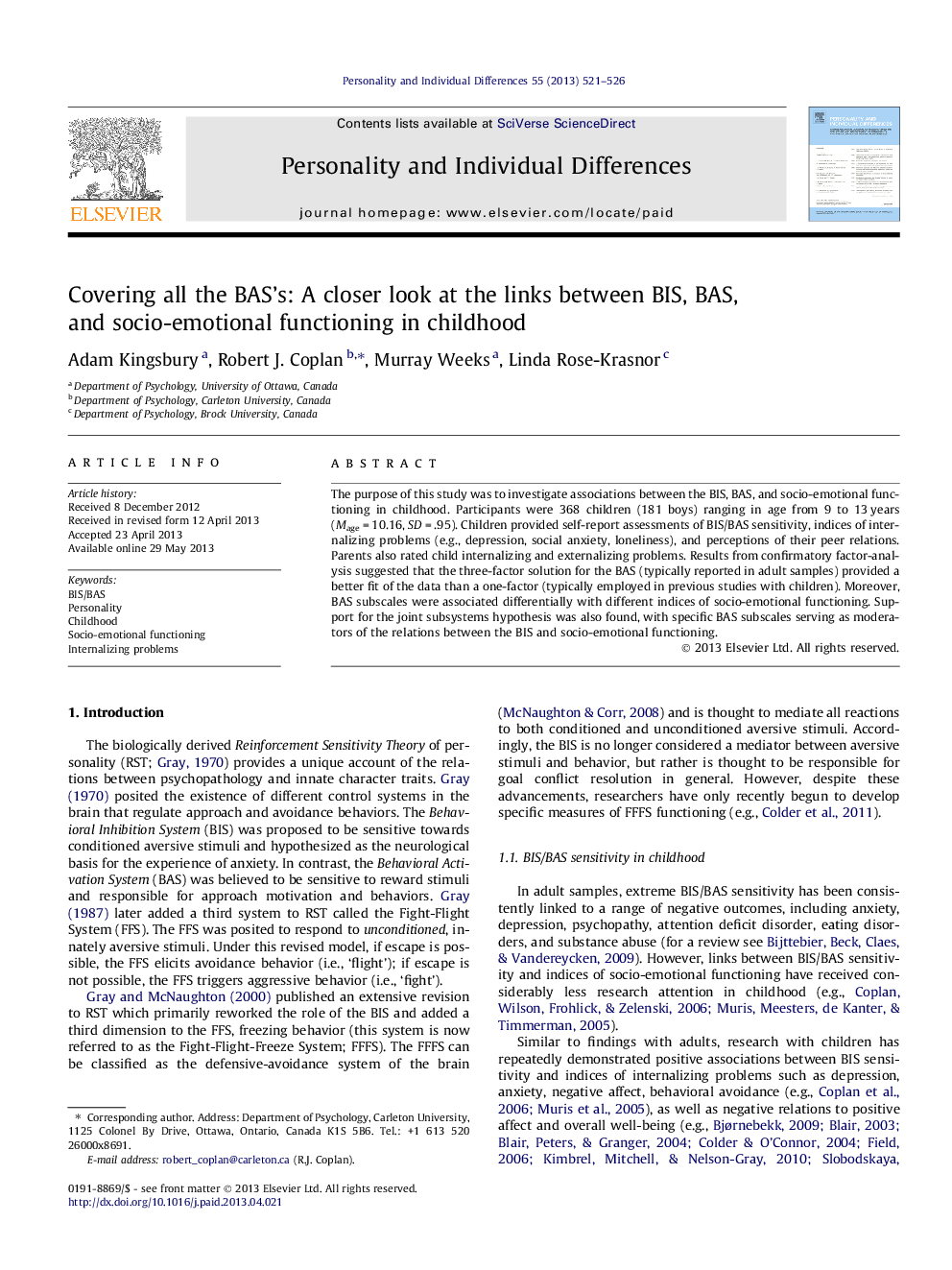| Article ID | Journal | Published Year | Pages | File Type |
|---|---|---|---|---|
| 890603 | Personality and Individual Differences | 2013 | 6 Pages |
•Provides evidence for three sub-factors of BAS in late childhood.•BAS subscales differentially associated with indices of socio-emotional functioning.•Support also found for the joint subsystems hypothesis.
The purpose of this study was to investigate associations between the BIS, BAS, and socio-emotional functioning in childhood. Participants were 368 children (181 boys) ranging in age from 9 to 13 years (Mage = 10.16, SD = .95). Children provided self-report assessments of BIS/BAS sensitivity, indices of internalizing problems (e.g., depression, social anxiety, loneliness), and perceptions of their peer relations. Parents also rated child internalizing and externalizing problems. Results from confirmatory factor-analysis suggested that the three-factor solution for the BAS (typically reported in adult samples) provided a better fit of the data than a one-factor (typically employed in previous studies with children). Moreover, BAS subscales were associated differentially with different indices of socio-emotional functioning. Support for the joint subsystems hypothesis was also found, with specific BAS subscales serving as moderators of the relations between the BIS and socio-emotional functioning.
